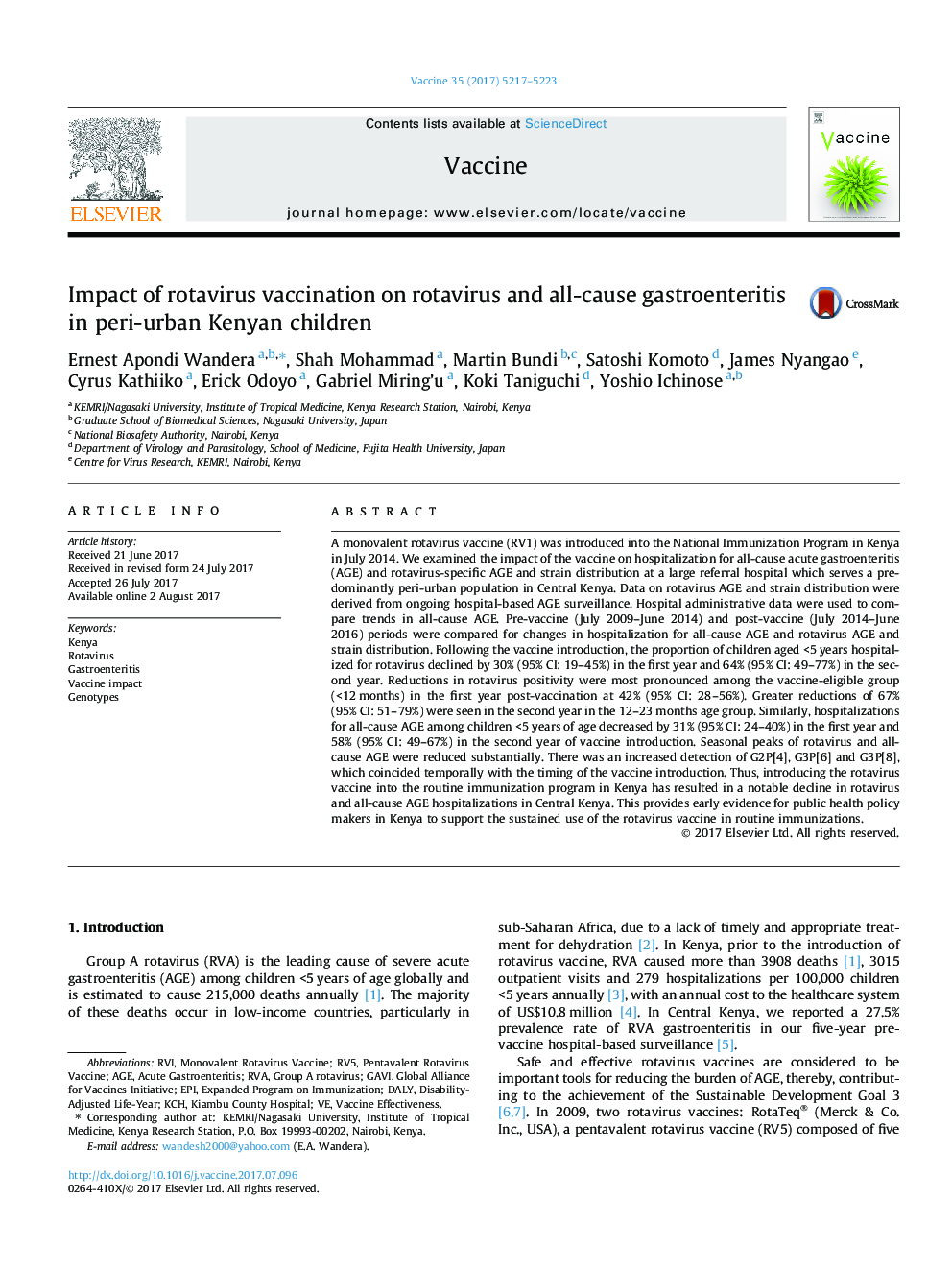| کد مقاله | کد نشریه | سال انتشار | مقاله انگلیسی | نسخه تمام متن |
|---|---|---|---|---|
| 5536943 | 1402311 | 2017 | 7 صفحه PDF | دانلود رایگان |
- Rotavirus-associated hospitalizations declined by 49.8%.
- Declines in rotavirus hospitalizations were greatest in vaccine eligible children.
- Hospitalizations for all-cause gastroenteritis decreased by 40.2%.
- Changes in strain distribution observed but could not be attributed to vaccine.
- Findings suggest a significant public health impact of rotavirus vaccinations in Kenya.
A monovalent rotavirus vaccine (RV1) was introduced into the National Immunization Program in Kenya in July 2014. We examined the impact of the vaccine on hospitalization for all-cause acute gastroenteritis (AGE) and rotavirus-specific AGE and strain distribution at a large referral hospital which serves a predominantly peri-urban population in Central Kenya. Data on rotavirus AGE and strain distribution were derived from ongoing hospital-based AGE surveillance. Hospital administrative data were used to compare trends in all-cause AGE. Pre-vaccine (July 2009-June 2014) and post-vaccine (July 2014-June 2016) periods were compared for changes in hospitalization for all-cause AGE and rotavirus AGE and strain distribution. Following the vaccine introduction, the proportion of children aged <5Â years hospitalized for rotavirus declined by 30% (95% CI: 19-45%) in the first year and 64% (95% CI: 49-77%) in the second year. Reductions in rotavirus positivity were most pronounced among the vaccine-eligible group (<12Â months) in the first year post-vaccination at 42% (95% CI: 28-56%). Greater reductions of 67% (95% CI: 51-79%) were seen in the second year in the 12-23Â months age group. Similarly, hospitalizations for all-cause AGE among children <5Â years of age decreased by 31% (95% CI: 24-40%) in the first year and 58% (95% CI: 49-67%) in the second year of vaccine introduction. Seasonal peaks of rotavirus and all-cause AGE were reduced substantially. There was an increased detection of G2P[4], G3P[6] and G3P[8], which coincided temporally with the timing of the vaccine introduction. Thus, introducing the rotavirus vaccine into the routine immunization program in Kenya has resulted in a notable decline in rotavirus and all-cause AGE hospitalizations in Central Kenya. This provides early evidence for public health policy makers in Kenya to support the sustained use of the rotavirus vaccine in routine immunizations.
Journal: Vaccine - Volume 35, Issue 38, 12 September 2017, Pages 5217-5223
